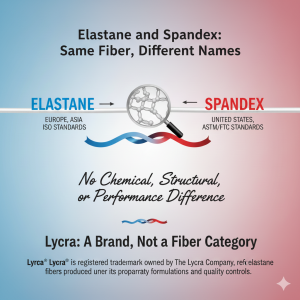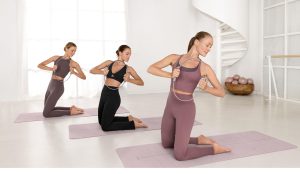Covered elastic yarn has emerged as a crucial component in the textile industry, revolutionizing the way we approach comfort, flexibility, and durability in fabrics. This article delves deep into the multifaceted world of covered elastic yarn, exploring its applications, Market drivers, and the trends shaping its future. As we navigate through the intricacies of this innovative material, we’ll uncover the factors influencing its adoption across various sectors and regions, providing valuable insights for industry professionals, researchers, and enthusiasts alike.
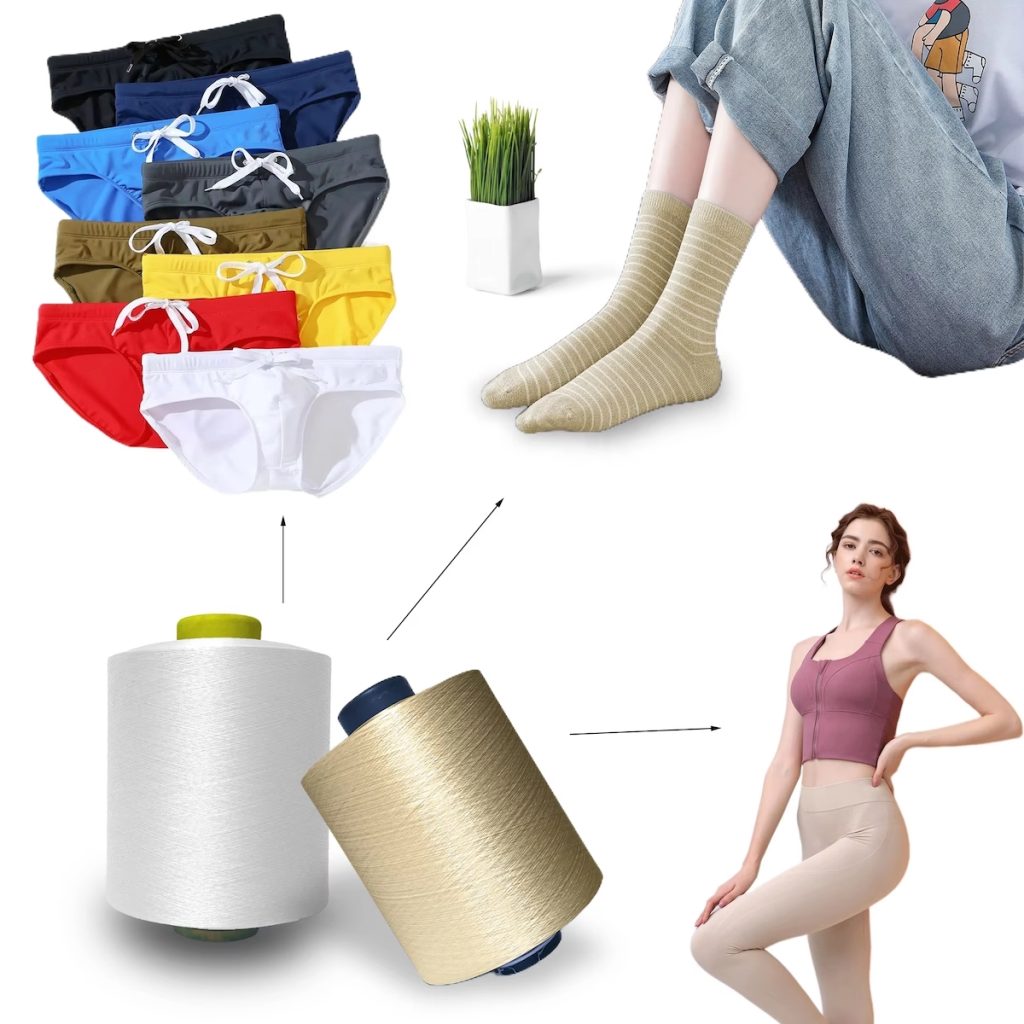
Introduction to Covered Elastic Yarn
Covered elastic yarn represents a significant advancement in textile technology, combining the stretchability of elastomeric fibers with the protective and aesthetic qualities of various covering materials. This section explores the fundamental aspects of covered elastic yarn, its various types, and the evolutionary journey that has led to its current prominence in the textile market.
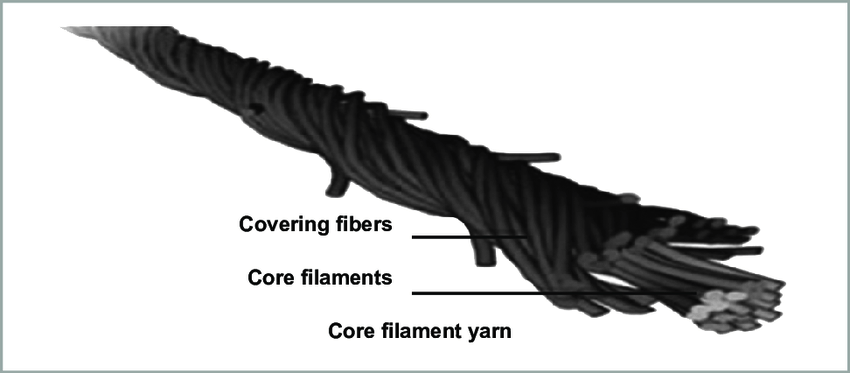
Definition and Characteristics
Covered elastic yarn is a specialized textile product that consists of an elastic core, typically made from elastane or spandex, encased within a covering of another fiber or material. This unique construction imparts several distinctive characteristics to the yarn:
Elasticity and Recovery: The core of covered elastic yarn provides exceptional stretch capabilities, allowing fabrics to conform to shapes and movements. More importantly, it offers excellent recovery, returning to its original form after being stretched. This property is crucial for maintaining garment shape and fit over time.
Durability: The outer covering protects the elastic core from abrasion, chemicals, and environmental factors. This significantly enhances the yarn’s lifespan compared to bare elastic fibers, making it suitable for applications requiring long-term performance.
Versatility in Appearance: Depending on the covering material used, covered elastic yarn can take on various appearances and textures. This versatility allows it to be seamlessly integrated into different fabric types, from sheer lingerie to heavy-duty sportswear.
Comfort: The combination of stretch and softness provided by the covering material results in fabrics that offer superior comfort. This is particularly noticeable in form-fitting garments where the yarn allows for freedom of movement without compromising on fit.
The unique blend of these characteristics has positioned covered elastic yarn as a staple in modern textile manufacturing, driving innovation across multiple product categories.
Types of Covered Elastic Yarn
The world of covered elastic yarn is diverse, with various types developed to meet specific industry needs. Understanding these variations is crucial for appreciating the material’s versatility:
Single Covered Yarn: This type features a single layer of covering fiber wrapped around the elastic core. It offers a good balance of elasticity and durability, making it suitable for a wide range of applications, from lightweight lingerie to more robust activewear.
Double Covered Yarn: As the name suggests, this yarn has two layers of covering material. The additional layer provides enhanced protection and stability, making it ideal for applications requiring higher durability or a more refined appearance. Double covered yarn is often used in high-end sportswear and compression garments.
Air Covered Yarn: This innovative type uses air jets to intertwine the covering fiber with the elastic core, resulting in a yarn with exceptional softness and a unique, fluffy texture. Air covered yarn is particularly favored in the production of comfortable, everyday wear items.
Core Spun Yarn: In this type, the elastic core is integrated into the center of staple fibers during the spinning process. This results in a yarn that looks and feels like traditional spun yarn but with added stretch properties. Core spun yarn is widely used in denim and other cotton-rich stretchable fabrics.
Each type of covered elastic yarn offers distinct advantages, allowing manufacturers to select the most appropriate option based on the specific requirements of their end product. This diversity has been instrumental in expanding the application scope of covered elastic yarn across various textile sectors.
Historical Development and Innovations
The journey of covered elastic yarn is a testament to the continuous innovation in the textile industry:
Early Beginnings: The concept of elastic fibers dates back to the 19th century with the invention of rubber threads. However, these early versions were limited in their applications due to durability issues and sensitivity to heat and chemicals.
Breakthrough with Synthetic Elastomers: The development of synthetic elastomers in the mid-20th century, particularly the invention of spandex (also known as elastane) in 1958 by chemist Joseph Shivers at DuPont, marked a significant milestone. Spandex offered superior elasticity and recovery compared to rubber, opening up new possibilities in textile applications.
Introduction of Covering Techniques: As the potential of elastic fibers became apparent, textile engineers began experimenting with covering techniques to enhance their usability and durability. The first covered elastic yarns emerged in the 1960s, primarily used in specialized applications like foundation garments.
Advancements in Covering Materials: Over the decades, the range of materials used for covering elastic cores expanded significantly. From traditional nylon and polyester to more advanced fibers like microfibers and eco-friendly options, these advancements have continually improved the performance and versatility of covered elastic yarn.
Integration of Smart Technologies: Recent innovations have seen the incorporation of smart technologies into covered elastic yarn. This includes conductive fibers for wearable electronics and shape memory materials that respond to temperature changes, pushing the boundaries of what’s possible in textile engineering.
The evolution of covered elastic yarn reflects a broader trend in the textile industry towards materials that offer enhanced functionality without compromising on comfort or aesthetics. As we move forward, ongoing research and development in this field promise to unlock even more exciting possibilities for this versatile material.
Key Applications of Covered Elastic Yarn
Covered elastic yarn has found its way into numerous applications across various industries, revolutionizing product design and enhancing user experience. This versatile material’s unique properties make it invaluable in creating comfortable, form-fitting, and durable products. Let’s explore the key sectors where covered elastic yarn has made a significant impact.
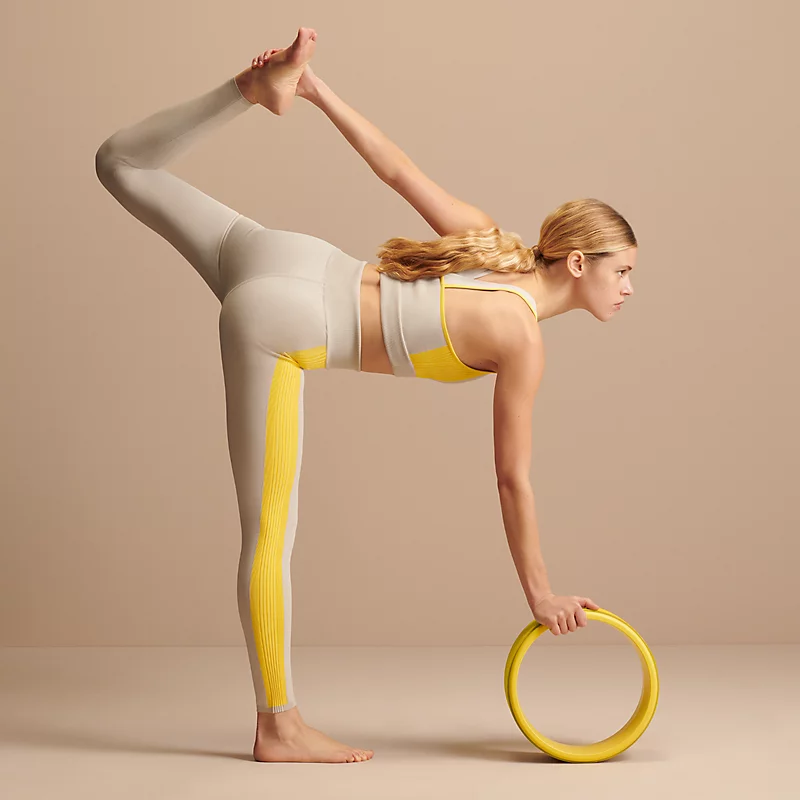
Apparel and Fashion Industry
The apparel and fashion industry has been one of the primary beneficiaries of covered elastic yarn technology. Its integration into clothing has transformed how garments fit, feel, and perform:
Activewear and Athleisure: Covered elastic yarn is a cornerstone of modern activewear. Its ability to provide stretch and recovery is crucial for garments that need to accommodate a wide range of movements while maintaining shape. From yoga pants to compression shirts, the yarn allows for snug fits that move with the body, enhancing both comfort and performance.
In high-intensity sportswear, covered elastic yarn contributes to moisture-wicking properties and helps regulate body temperature. The yarn’s durability ensures that these garments can withstand frequent washing and wear, maintaining their shape and elasticity over time.
Denim and Casual Wear: The integration of covered elastic yarn into denim has revolutionized the jeans market. Stretch denim, made possible by core-spun yarns incorporating elastic fibers, offers the classic denim look with added comfort and flexibility. This innovation has expanded the appeal of jeans across demographics, allowing for designs that flatter various body types while providing unrestricted movement.
Beyond jeans, covered elastic yarn has found its way into various casual wear items, from t-shirts to jackets. Its presence allows for fitted silhouettes that don’t compromise on comfort, catering to the growing demand for versatile, all-day wear clothing.
Lingerie and Underwear: In intimate apparel, covered elastic yarn plays a crucial role in creating comfortable, supportive garments. Its use in bras, underwear, and shapewear allows for designs that offer gentle compression and shaping without the discomfort associated with rigid materials.
The yarn’s ability to be covered with soft, skin-friendly fibers makes it ideal for these sensitive applications. Moreover, its resistance to body oils and frequent washing ensures that these garments maintain their fit and elasticity over time.
High Fashion and Couture: Designers in high fashion have embraced covered elastic yarn for its ability to create innovative silhouettes and textures. Its versatility allows for the creation of form-fitting dresses, structured jackets, and even avant-garde pieces that challenge traditional notions of fabric behavior.
In couture, the precision control over stretch and recovery offered by different types of covered elastic yarn enables designers to create garments with exceptional fit and drape, elevating the art of tailoring to new heights.
Medical Textiles
The medical and healthcare sector has found numerous applications for covered elastic yarn, leveraging its unique properties to improve patient care and comfort:
Compression Garments: One of the most significant applications of covered elastic yarn in medical textiles is in compression therapy. Compression garments, used to treat conditions like lymphedema, venous disorders, and post-surgical recovery, rely heavily on the controlled pressure provided by fabrics incorporating covered elastic yarn.
These garments need to maintain consistent pressure over extended periods, making the durability and recovery properties of covered elastic yarn crucial. The yarn’s ability to be covered with skin-friendly fibers also reduces the risk of allergic reactions, a critical factor in medical applications.
Orthopedic Supports: Covered elastic yarn is extensively used in the manufacture of orthopedic supports and braces. These products, designed to provide support and stability to joints and muscles, benefit from the yarn’s ability to offer flexible support without restricting movement.
From ankle braces to back supports, the integration of covered elastic yarn allows for the creation of products that conform to the body’s contours while providing the necessary compression and support. The yarn’s durability ensures that these supports maintain their effectiveness even with regular use.
Wound Care Products: In advanced wound care, covered elastic yarn plays a role in creating flexible, breathable bandages and dressings. The yarn’s stretch properties allow for dressings that can accommodate swelling and movement while maintaining consistent contact with the wound site.
The ability to cover the elastic core with antimicrobial fibers further enhances the yarn’s suitability for wound care applications, contributing to products that not only provide physical protection but also aid in the healing process.
Home Textiles and Upholstery
The versatility of covered elastic yarn extends beyond wearable applications, finding significant use in home textiles and upholstery:
Furniture Upholstery: In the furniture industry, covered elastic yarn has revolutionized the approach to upholstery. Its integration allows for the creation of form-fitting covers that maintain their shape over time, even with frequent use. This is particularly valuable in seating applications, where the yarn’s recovery properties help maintain the furniture’s appearance and comfort.
The yarn’s durability also contributes to the longevity of upholstered pieces, resisting wear and tear more effectively than traditional materials. Additionally, the ability to cover the elastic core with a wide range of fibers allows for diverse textures and finishes, expanding the design possibilities in furniture upholstery.
Bedding and Mattresses: Covered elastic yarn plays a crucial role in modern bedding solutions. In mattress construction, it’s used to create flexible, supportive layers that adapt to the sleeper’s body shape. This contributes to improved comfort and pressure relief, enhancing sleep quality.
In bedding accessories like fitted sheets and mattress protectors, the yarn allows for snug, secure fits that don’t compromise on comfort. The elasticity ensures that these items stay in place, even with movement during sleep.
Curtains and Drapery: The use of covered elastic yarn in curtains and drapery has opened up new possibilities in interior design. Fabrics incorporating this yarn can create elegant, flowing drapes that maintain their shape while offering ease of movement.
In applications like blackout curtains, the yarn’s ability to create a tight seal against light infiltration enhances the product’s effectiveness. The durability of covered elastic yarn also means that these window treatments maintain their appearance and functionality over extended periods, even with frequent use.
Market Drivers for Covered Elastic Yarn
The market for covered elastic yarn has experienced significant growth in recent years, driven by a combination of consumer preferences, technological advancements, and evolving industry needs. Understanding these market drivers is crucial for stakeholders in the textile industry to anticipate trends and make informed decisions. Let’s explore the key factors propelling the demand for covered elastic yarn.
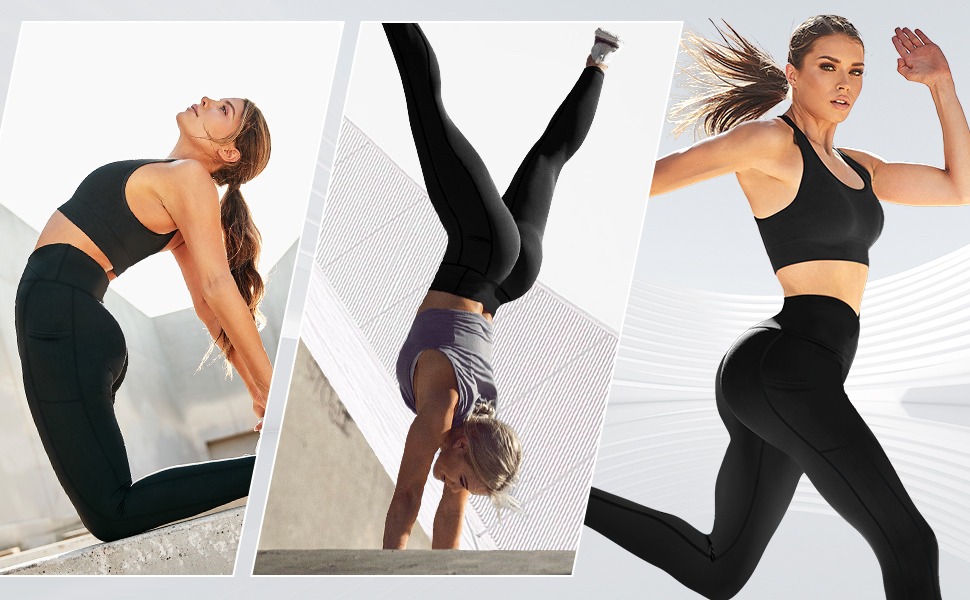
Growing Demand for Stretchable Fabrics
The increasing consumer preference for comfortable, form-fitting clothing has been a major driver for the covered elastic yarn market:
Comfort-Driven Consumer Choices: In recent years, there has been a noticeable shift in consumer priorities towards comfort in clothing. This trend has accelerated, particularly in the wake of global events that have led to more time spent at home. Consumers are increasingly seeking garments that offer both style and comfort, creating a surge in demand for stretchable fabrics.
Covered elastic yarn plays a crucial role in meeting this demand. Its ability to impart stretch and recovery to fabrics without compromising on appearance or durability has made it an essential component in creating comfortable, versatile clothing. From casual wear to formal attire, the integration of covered elastic yarn allows for garments that move with the body, providing unrestricted movement and all-day comfort.
Performance Wear Evolution: The evolution of performance wear has been another significant driver for covered elastic yarn usage. Athletes and fitness enthusiasts demand clothing that enhances their performance while providing maximum comfort. Covered elastic yarn enables the creation of form-fitting sportswear that offers compression, moisture-wicking properties, and freedom of movement.
This trend extends beyond traditional sportswear into everyday clothing, with many consumers seeking the performance benefits of athletic wear in their daily attire. The concept of “athleisure” – clothing designed for both athletic and leisure activities – has become increasingly popular, further driving the demand for fabrics incorporating covered elastic yarn.
Fashion Industry Adoption: The fashion industry’s embrace of stretchable fabrics has been a key factor in the growth of the covered elastic yarn market. Designers and fashion brands are increasingly incorporating stretch elements into their collections, recognizing the appeal of garments that offer both style and comfort.
From high-end couture to fast fashion, the versatility of covered elastic yarn allows for innovative designs that were previously challenging to achieve. This has opened up new possibilities in silhouette creation, fit optimization, and garment functionality, driving continued demand for covered elastic yarn across various fashion segments.
Rise in Athleisure Wear Popularity
The athleisure trend has been one of the most significant drivers of covered elastic yarn demand in recent years:
Blurring Lines Between Activewear and Casual Wear: Athleisure represents the fusion of athletic and leisure wear, creating a category of clothing that is suitable for both exercise and everyday activities. This trend has led to a significant increase in demand for fabrics that can provide the performance characteristics of sportswear while maintaining the aesthetics suitable for casual or even semi-formal settings.
Covered elastic yarn is central to achieving this balance. It allows for the creation of fabrics that offer the stretch and recovery needed for physical activities while also providing the drape and appearance suitable for casual wear. This versatility has made athleisure garments extremely popular among consumers seeking clothing that can transition seamlessly between different activities throughout the day.
Health and Wellness Focus: The growing emphasis on health and wellness has contributed to the popularity of athleisure wear. As more people adopt active lifestyles, there’s an increased demand for clothing that can accommodate various physical activities while still being suitable for social settings.
Covered elastic yarn enables the production of garments that not only support physical activities but also contribute to the wearer’s comfort and confidence. The ability to create form-fitting, flattering silhouettes that also offer functional benefits has made athleisure wear appealing to a broad demographic, further driving demand for covered elastic yarn.
Workplace Culture Shifts: Changes in workplace dress codes and the rise of more casual work environments have also contributed to the athleisure trend. Many workplaces now accept more relaxed attire, allowing employees to wear comfortable, versatile clothing that can transition from work to leisure activities.
This shift has increased the demand for polished-looking athleisure wear, often incorporating covered elastic yarn to achieve a balance between comfort and professional appearance. The yarn’s ability to be used in a wide range of fabric types allows for the creation of athleisure garments that meet diverse workplace requirements while maintaining comfort and functionality.
Innovations in Textile Technology
Advancements in textile technology have played a crucial role in expanding the applications and improving the performance of covered elastic yarn:
Smart Textiles Integration: The emergence of smart textiles has opened up new avenues for covered elastic yarn usage. Innovations in conductive fibers and electronic components that can be integrated into fabrics have created opportunities for covered elastic yarn to be part of wearable technology solutions.
For instance, covered elastic yarn can be used as a substrate for integrating sensors or conductive pathways in smart garments. This allows for the creation of clothing that can monitor physiological parameters, track movement, or even provide haptic feedback, all while maintaining the comfort and flexibility expected from modern textiles.
Sustainable Material Developments: As sustainability becomes increasingly important in the textile industry, innovations in eco-friendly materials have impacted the covered elastic yarn market. Research into biodegradable elastomers and recycled covering materials has led to the development of more sustainable versions of covered elastic yarn.
These innovations allow manufacturers to meet the growing consumer demand for environmentally friendly products without compromising on performance. Sustainable covered elastic yarn options are particularly appealing in sectors like activewear and fashion, where environmental consciousness is becoming a key purchasing factor.
Enhanced Performance Characteristics: Ongoing research in material science has led to improvements in the performance characteristics of covered elastic yarn. Innovations in fiber technology have resulted in yarns with enhanced stretch, recovery, and durability properties.
For example, advancements in polymer science have led to the development of elastomeric fibers with improved heat resistance, allowing covered elastic yarn to be used in high-temperature applications. Similarly, innovations in covering techniques have resulted in yarns with better abrasion resistance and color fastness, expanding their potential applications across various textile sectors.
Consumer Preferences Impacting the Market
Consumer preferences play a pivotal role in shaping the covered elastic yarn market. As end-users become more discerning and aware of their clothing choices, their demands significantly influence product development and market trends. Understanding these preferences is crucial for manufacturers and retailers to stay competitive in the rapidly evolving textile industry.
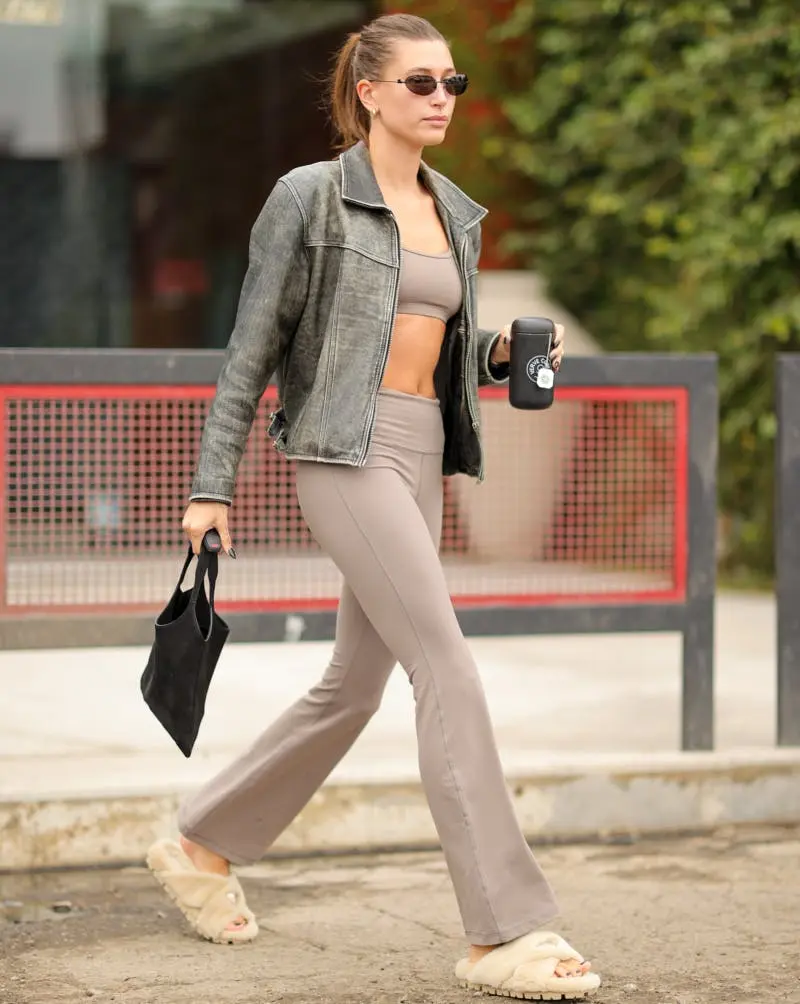
Shift Toward Sustainable Materials
The growing awareness of environmental issues has led to a significant shift
Shift Toward Sustainable Materials
The growing awareness of environmental issues has led to a significant shift in consumer preferences towards sustainable materials. As consumers become more informed about the impact of their choices on the planet, they are increasingly seeking out products made from eco-friendly fabrics. This trend is particularly influential in the covered elastic yarn market, where manufacturers are responding by incorporating sustainable practices into their production processes.
Consumers are now looking for textiles that are not only functional but also environmentally responsible. Covered elastic yarns made from recycled materials or biodegradable fibers are gaining traction as they align with the values of eco-conscious shoppers. Companies that prioritize sustainability in their product offerings can gain a competitive edge and capture the attention of this growing demographic.
Moreover, the demand for transparency in the supply chain has risen significantly. Consumers want to know where their products come from and how they are made. This shift towards accountability encourages brands to adopt sustainable sourcing practices, which in turn influences the compositions and characteristics of covered elastic yarn in the marketplace. By prioritizing sustainability, manufacturers can forge deeper connections with consumers who value ethical consumption, thus fostering brand loyalty and driving market growth.
Increasing Awareness of Comfort and Fit
In addition to sustainability, the increasing awareness of comfort and fit among consumers has transformed expectations regarding clothing design. The modern consumer prioritizes garments that offer both style and an exceptional level of comfort, particularly in an age where remote work and casual dressing have become more prevalent. Covered elastic yarn, known for its excellent stretchability and recovery properties, plays a pivotal role in meeting these demands.
Shoppers are gravitating toward fabrics that provide ease of movement without sacrificing aesthetics. The versatility of covered elastic yarn enables designers to create form-fitting garments that enhance the wearer’s silhouette while maintaining ultimate comfort. This results in clothing that not only looks good but also feels great, prompting consumers to invest in items that can transition seamlessly through various activities in their daily lives.
Furthermore, the rise of body positivity movements has encouraged more inclusive sizing and tailored designs that accommodate a range of body types. Brands that utilize covered elastic yarn can offer adjustable fits, allowing for a broader appeal to diverse consumer bases. By emphasizing comfort and fit, manufacturers can respond to a growing market segment that seeks practical yet stylish options, ultimately contributing to increased sales and brand visibility.
Influence of Fashion Trends
Fashion trends have a powerful influence on consumer buying habits, and the covered elastic yarn market is no exception. As styles evolve, so too do the requirements for textiles used in garment production. Covered elastic yarn’s ability to adapt to current fashion trends positions it favorably within the industry.
The resurgence of retro styles and nostalgic fashion, for example, has seen the revival of fitted silhouettes that require stretchable fabrics for optimal comfort. Designers are turning to covered elastic yarn to create pieces that reflect these trends while ensuring wearability. Whether it’s high-waisted trousers, bodycon dresses, or fitted activewear, the demand for stretchy materials has surged, providing ample opportunity for covered elastic yarn producers.
Moreover, the influence of social media and online platforms on fashion trends has been monumental. Influencers and fashion icons often showcase their outfits featuring comfortable, stretchable fabrics, further popularizing the use of covered elastic yarn. As consumers seek to emulate these trends, they drive demand for fabrics that allow them to achieve similar looks with confidence and ease. Thus, staying ahead of fashion trends becomes essential for manufacturers of covered elastic yarn to maintain relevance in a fast-paced industry.
Regional Analysis of Covered Elastic Yarn Market
The covered elastic yarn market is characterized by regional variations in demand, driven by cultural preferences, economic conditions, and textile industry developments. Analyzing the different regions provides insights into the factors influencing market dynamics and growth potential.
North America Market Trends
In North America, the covered elastic yarn market has shown robust growth, primarily due to the rising popularity of athleisure wear and the increasing demand for comfort-oriented textiles. American consumers are embracing versatile apparel that caters to both exercise and casual settings, resulting in a surge in demand for fabrics incorporating covered elastic yarn.
Additionally, there is a growing emphasis on sustainability in North America. Textile manufacturers are responding to consumer preferences by developing eco-friendly covered elastic yarn options. Collaborations between brands and sustainable material suppliers are becoming more common, reflecting a commitment to reducing environmental impacts. Consequently, the North American market is witnessing an influx of innovative products that cater to health-conscious and environmentally aware consumers.
Europe Market Dynamics
Europe has long been a leader in fashion innovation, and the covered elastic yarn market reflects this trend. European consumers are progressively gravitating toward high-quality, performance-driven textiles, which has led to increased demand for covered elastic yarn in both high-end fashion and practical applications.
The region’s stringent regulatory standards concerning environmental impact have also resulted in a strong push for sustainable practices. Manufacturers are investing in research and development to create sustainable covered elastic yarns that meet the evolving requirements of European consumers. The combination of fashion-forward thinking and a commitment to sustainability positions Europe as a key player in the global covered elastic yarn market.
Asia-Pacific Region Growth Potential
The Asia-Pacific region presents significant growth potential for the covered elastic yarn market, driven by rapid urbanization and changing lifestyle patterns. As disposable incomes rise in countries like China and India, consumers are increasingly seeking fashionable and comfortable clothing options, propelling the demand for covered elastic yarn in the apparel sector.
Moreover, the expanding middle class in Asia-Pacific is fostering a greater interest in athleisure and activewear. Local manufacturers are recognizing the market opportunities and investing in advanced textile technologies to produce covered elastic yarn that meets the specific needs of consumers in this region. The convergence of cultural shifts towards health and fitness, along with fashion trends, positions the Asia-Pacific market for substantial growth in the coming years.
Conclusion
In conclusion, the covered elastic yarn market is influenced by a variety of interconnected factors, ranging from consumer preferences for comfort and sustainability to the innovations in textile technology and fashion trends. As the demand for stretchable fabrics continues to grow in sectors such as apparel, medical textiles, and home furnishings, manufacturers must remain agile and responsive to shifting market dynamics.
The regional analysis highlights the distinct trends shaping the covered elastic yarn market across North America, Europe, and Asia-Pacific, revealing both challenges and opportunities for growth. To thrive in this competitive landscape, companies must prioritize sustainability initiatives and technological advancements while aligning their products with evolving consumer preferences.
Looking forward, the future outlook for the covered elastic yarn market appears promising as brands innovate and adapt to meet the demands of modern consumers. Emerging trends, including smart textiles and eco-friendly materials, will likely shape the industry’s trajectory, presenting potential areas for investment and expansion. Ultimately, the covered elastic yarn market stands at the intersection of fashion, functionality, and sustainability, making it a vibrant space for continued evolution and growth.


